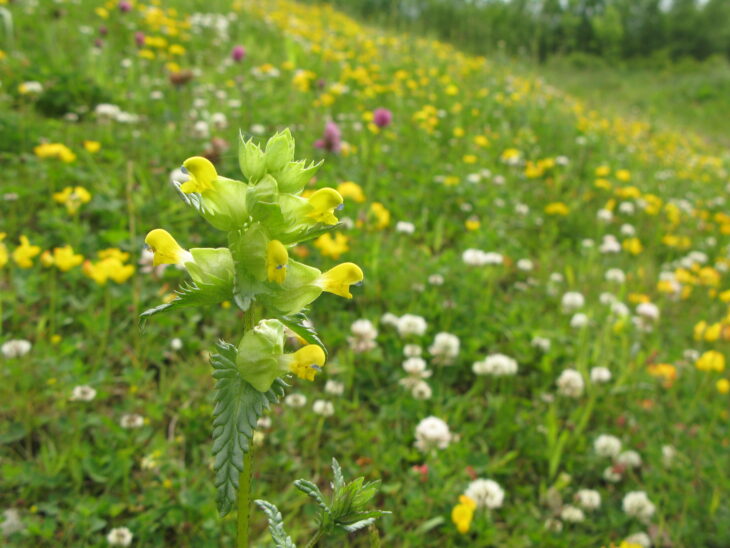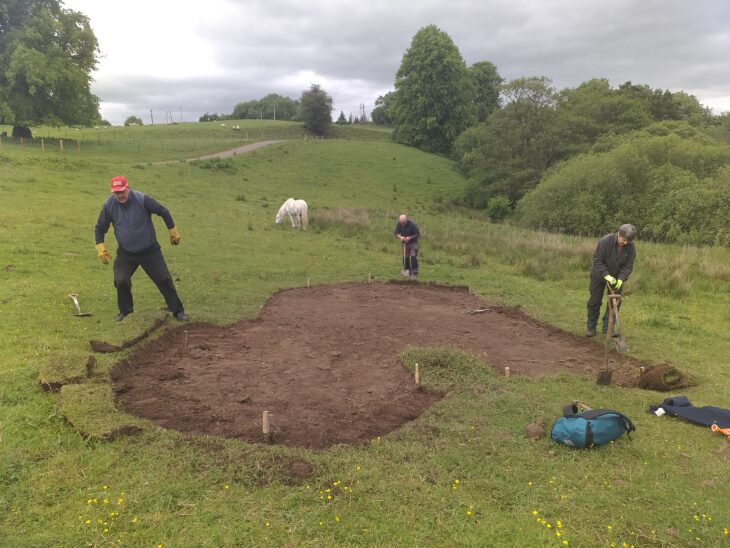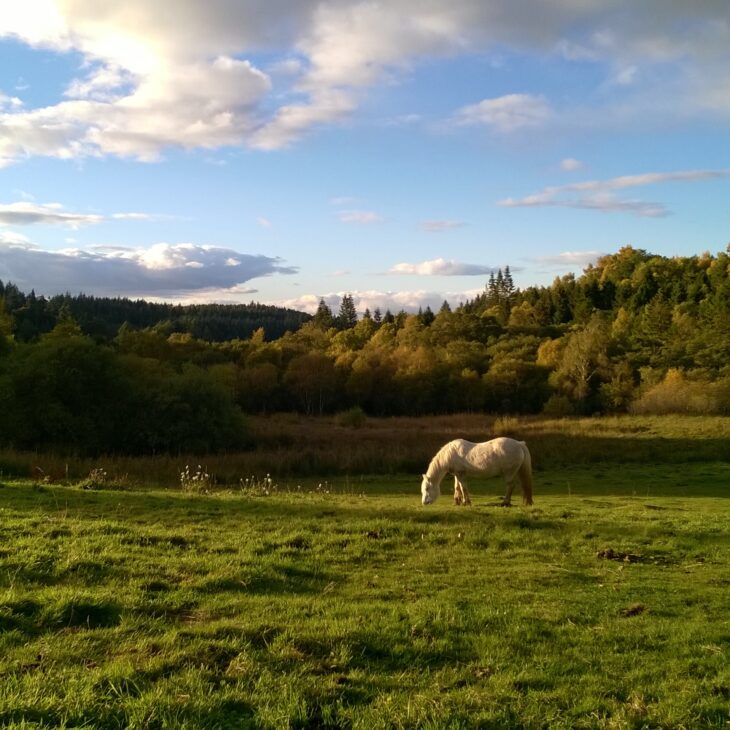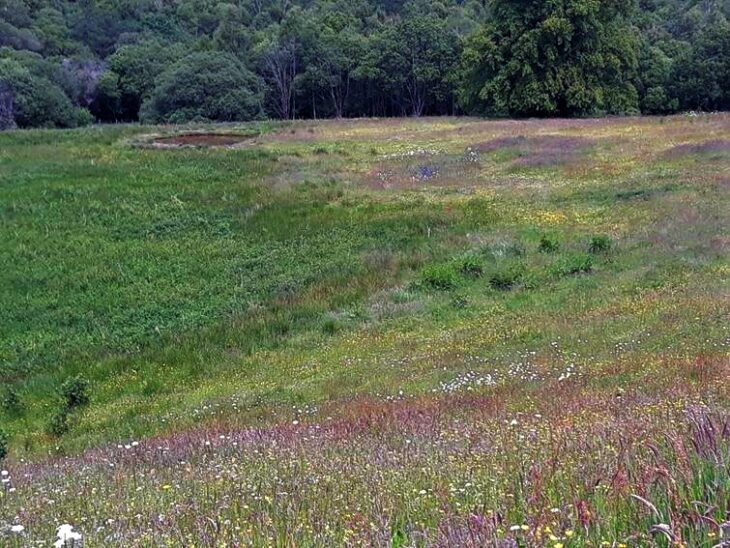Making room for meadows
Wildflower meadows are incredibly valuable for wildlife, but in the UK we have lost most of them. At the Falls of Clyde we are bringing one back to life.
The Falls of Clyde reserve typically brings to mind the impressive sight of the river tumbling over the steep rocks at Corra Linn, or tranquil woodlands full of wildflowers, birdsong and badgers. But in a less-visited corner lies an area that is equally buzzing with life, especially at this time of year: the meadow.
Lowland meadow habitat is incredibly valuable for wildlife, but since 1935 the UK has lost a staggering 97% of it. Largely, this reflects changes in the way agriculture is practised. Meadows require a specific regime of cutting and/or grazing to maintain their species richness, a system no longer used by the majority of farmers due to economic pressures and other factors. Put a healthy wildflower meadow in summer next to a more typical area of pasture though and the difference is stark: one is a sea of green grass; the other a riot of colour – the pink-purples of orchids, selfheal and knapweed, white ox-eye daisy and eyebright, clover, buttercup and yellow rattle.

This diversity of plants in turn supports a wide range of animals, including critically important pollinators like bumblebees, butterflies and moths. If you’ve been following the news, you will have seen that insects are under severe threat, so it is extremely important that we conserve and create areas where these animals can continue to thrive.
In general, the way to do this is to prevent the more delicate grasses and wildflowers from being out-competed by more vigorous, larger grasses such as cock’s-foot and Yorkshire fog, which if established can pave the way for scrub (hawthorn, gorse) and ultimately woodland to establish. While woodlands are also valuable, the loss of meadows means that where they can be protected, they should be. That is what we are doing at Falls of Clyde.

Although agricultural practices have shifted, livestock are still an important tool for managing meadows, using a technique called conservation grazing. Using cattle, sheep or ponies is preferable to mechanical cutting for a variety of reasons, but in particular because their grazing habits (for instance not eating near where they leave dung) create mosaics of different vegetation structures that helps the meadow support an even wider range of species. In addition, grazing animals (especially cattle) create patches of bare ground that are great for invertebrates and reptiles.


Conservation grazing is such an important tool in fact that Scottish Wildlife Trust maintains its very own ‘Flying Flock’ of livestock, which are moved around between more than 20 grasslands, peatlands and marshes across the Central Lowlands, improving the reserves year on year.
For more information, check out our webpage or follow the flock on Facebook. If you are feeling really inspired, why not try creating your own mini-meadow?
Patrick Endall, Falls of Clyde Seasonal Ranger
Help protect Scotland’s wildlife
Our work to save Scotland’s wildlife is made possible thanks to the generosity of our members and supporters.
Join today from just £3 a month to help protect the species you love.
Preface
Wildflower meadows are incredibly valuable for wildlife, but in the UK we have lost most of them. At the Falls of Clyde we are bringing one back to life. The …
